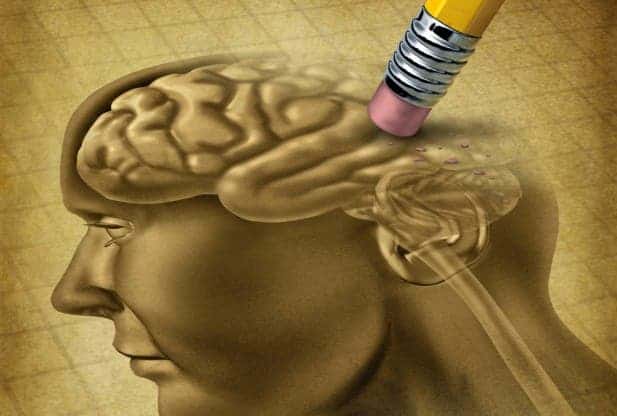For a while, the general consensus was that long term memories are stored in synapses. A new UCLA research topples this paradigm after experiments made on snails suggests that synapses aren’t that crucial storing memories as previously believed, but only facilitate the transfer of information someplace else, most likely in the nucleus of the neurons themselves – though this has yet to be proven. The findings defy conventional wisdom and shines new hope that people struck by neruodegenerative diseases like Alzheimer’s might have be able to recover part of their memories.
Tabula rasa

“Long-term memory is not stored at the synapse,” said David Glanzman, a senior author of the study, and a UCLA professor of integrative biology and physiology and of neurobiology. “The nervous system appears to be able to regenerate lost synaptic connections. If you can restore the synaptic connections, the memory will come back. It won’t be easy, but I believe it’s possible.”
The team led by Glanzman studied a marine snail called Aplysia, which has a defensive system to protects its gill from potential harm. Namely, it has a withdrawal reflex that causes the sea hare’s delicate siphon and gill to be retracted when the animal is disturbed. This simple and easy to observe behaviour has made it a lab favorite for neuroscientists. Despite what you might think, the cellular and molecular processes seem to be very similar between the marine snail and humans, even though the snail has approximately 20,000 neurons and humans have about 1 trillion. Neurons each have several thousand synapses.
Researchers applied several electric shocks to the snail’s tail to enhance’s the snail’s withdrawal reflex sensibility. After a couple of more series of ‘shock therapy’, the enhancement stayed for days which shows it had been implemented in the snail’s long-term memory. On a neural level, when the shock is applied the hormone serotonin is released in the brain.
When serotonin reaches the nervous system, it promotes growth of new synaptic connections. As long-term memories are formed, the brain creates new proteins that are involved in making new synapses. When this process is disrupted, by a concussion, some other injury or neurodegenerative disease, the proteins aren’t synthesized and long-term memories can’t form.
“If you train an animal on a task, inhibit its ability to produce proteins immediately after training, and then test it 24 hours later, the animal doesn’t remember the training,” Glanzman said. “However, if you train an animal, wait 24 hours, and then inject a protein synthesis inhibitor in its brain, the animal shows perfectly good memory 24 hours later. In other words, once memories are formed, if you temporarily disrupt protein synthesis, it doesn’t affect long-term memory. That’s true in the Aplysia and in human’s brains.” (This explains why people’s older memories typically survive following a concussion.)
Brain grown in a jar
This process holds true even when the brain cells are studied in a Petri dish. The researchers placed sensory and motor neurons, involved in the snail’s withdrawal reflex, in a Petri dish and found that neurons re-formed the synaptic connections that were in place when the neurons were placed inside the snail’s body. When serotonin was added to mix, new synaptic connections altogether formed. However, if immediately after serotonin was added a protein synthesis inhibitor was also placed, then the new synaptic growth was blocked and long-term memories couldn’t be formed.
But do memories disappear when synapses do? The researchers wanted to know, so they counted the number of synapses in the dish and then, 24 hours later, they added the protein inhibitor. After the re-count, they found new synapses had grown and the synaptic connections between the neurons had been strengthened, so the inhibitor was of no consequence.
Next, the scientists added serotonin to a Petri dish containing a sensory neuron and motor neuron, waited 24 hours, and then added another brief pulse of serotonin — which served to remind the neurons of the original training — and immediately afterward add the protein synthesis inhibitor.This time, both synaptic growth and memory were erased. This suggests that the “reminder” pulse of serotonin triggered a new round of memory consolidation, and that inhibiting protein synthesis during this “reconsolidation” erased the memory in the neurons.
So, if synapses are indeed storing long term memory, then we should have seen that the lost synapses were the same ones that had grown in response to the serotonin. This wasn’t the case, however. Instead, they found that some of the new synapses were still present and some were gone, and that some of the original ones were gone, too. Glanzman says that there doesn’t seem to be any pattern to which synapses stayed and disappear, so it must mean that they’re not connected to long-term memory storage.
Moreover, when the scientists repeated the experiment in the snail, and then gave the animal a modest number of tail shocks — which do not produce long-term memory in a naive snail — the memory they thought had been completely erased returned.
“That suggests that the memory is not in the synapses but somewhere else,” Glanzman said. “We think it’s in the nucleus of the neurons. We haven’t proved that, though.”
While in its late stage Alzheimer’s destroys neurons, even in its early stage the disease causes memory loss. So, just because synapses are lost to the disease, it doesn’t necessarily mean that memories are erased as well. By re-activating the synapses, one might be able to tap into the lost memories as well.
Findings appeared in the online journal eLife.


